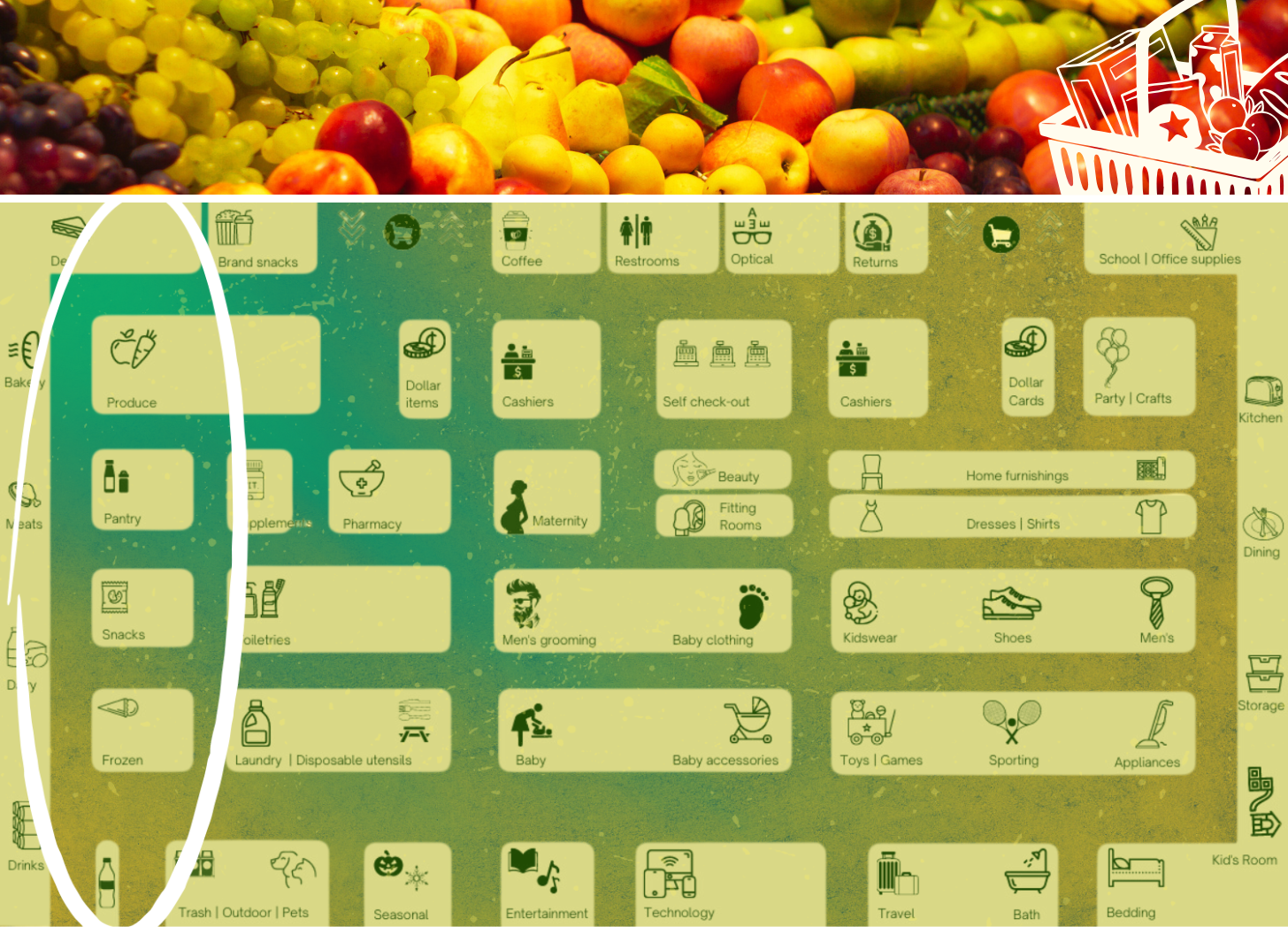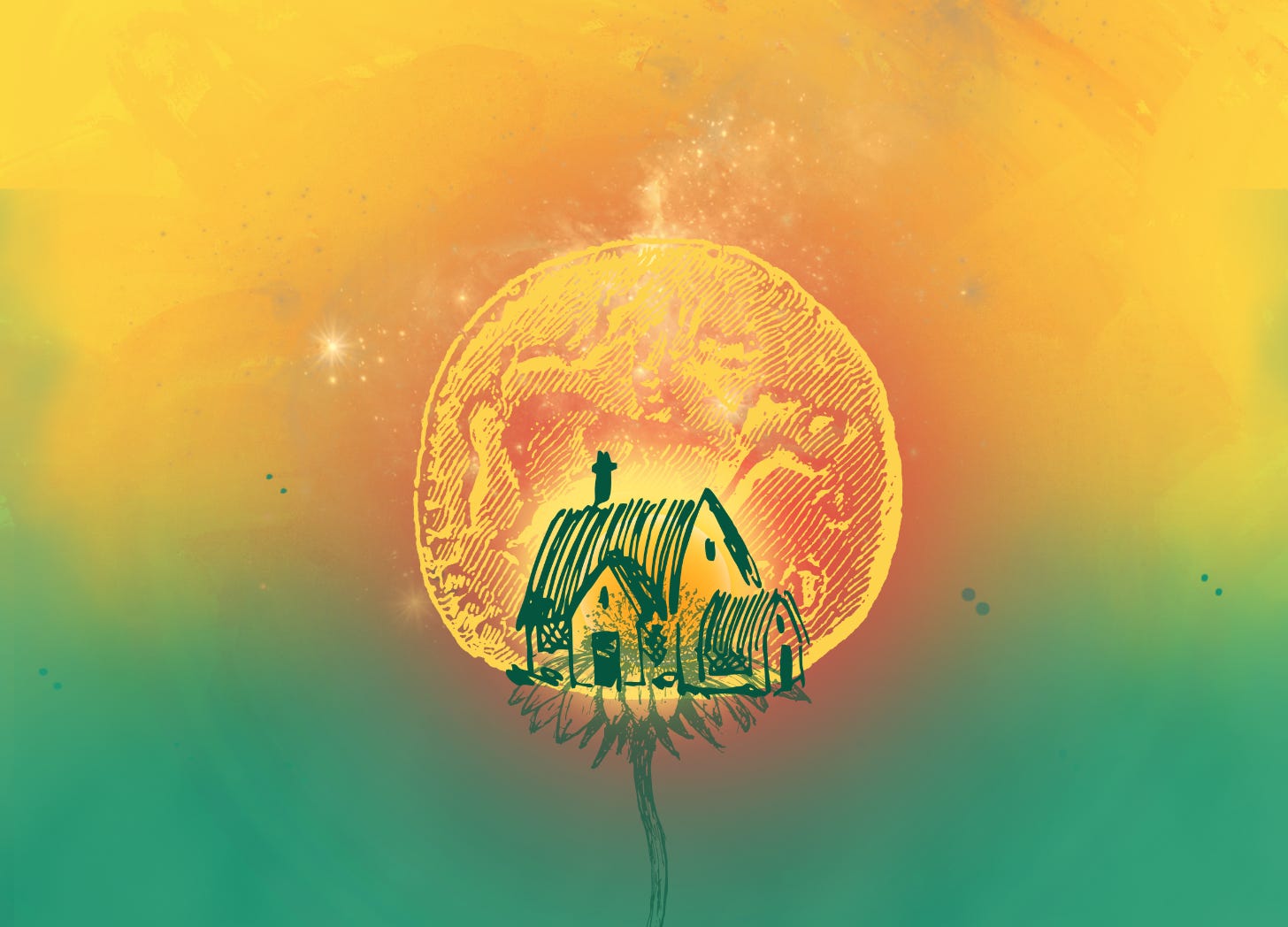Is our food market all wrong?
On the curious slow burn of our health in places we get our food
Are we eating the wrong direction of history?
Hi, everyone-
Is it me or do we always end up with either too much food or too little food—whenever we come out of the store?
Some time ago, I was teaching a lecture series at a university on the behavioral architecture of buying. Including buying food. Take a look at this map I created on standard indoor layouts of grocery stores, supermarkets, and food markets today.
Note where the location of the food is in relation to people.
2020s
Let’s now compare this to places worldwide that still hold customs like port-side markets.
1800s 1900s
And finally, what it used to be.
Pre-1800s
What do you notice is happening as you go back in time?
Where is the food located in relation to the human?
There are lots of things happening here. And we could be talking about it for hours. But the ones I wanted to point out have something to do with the dissatisfaction when we food shop.
I’d always go with a list. I specifically went to the aisles that have the things I need. And I got them. Inevitably, though: Oh, that bread looks good. Didn’t think I needed tomato sauce, but sure! And this avocado press-peeler also looks phenomenal!
Then, I’d get home, put the food away, and, immediately upon finishing my unpacking, I felt like I either got too much. Or too little.
Why?
I consider myself a fairly even-tempered person. I’m guessing you are, too, somewhat. But then when I look at what I end up buying, anyone looking might guess that I have an obesity problem. That, or I’m anorexic.
How come it’s so hard to moderate our eating?
The gurus will say that these stores are laid out in such a way that you can’t help but buy everything you see. And they definitely have a point. But the deeper issue is even more problematic.
The food is laid out in a conveyor-belt way. Too close together. And too close to us.
Food markets have deduced humans to motionless robots.
That list I was talking about is helpful, alright. But it’s designed to get me in. And out. Convenience is the currency. Which is useful sometimes.
But most times: it just turns us near motionless.
Going to the market used to be fun.
I remember it being the event of the week.
Oh, the smell of the sea that overcame. Both striking and seductive.
The sounds of farmers, traders, and vendors chatting. Often about “How much?” But more often about “How’s your son?” And the invisible agreed cost, reflects the humanity.
The colors, too, jumped with the conversation. Seemingly, they’d move as I went through each stall. Red apples. Yellow vegetables. Brown root. Green buds. Pink meat. White fish. And orange yolk. Not laid out in a row like an army. Laid out however the artisanal stall owner desired.
Food market stalls’ location used to change every week. And before stalls existed, the food was in the wild. We must go to them.
Not saying that we should all pick up spears and hunt in the wild.
Although some brave souls, like this Pacific Northwestern kid turned National Geographic adventurer whom I sat down and spoke with, definitely did.
I’m simply saying, that:
It’s odd that our food has gotten much richer. Didn’t know that soup cans can line a whole wall.
Food has also gotten much more colorful. Why are those watermelons so red, anyway?
The food’s gotten much bigger. Have you seen the size of those apples lately?
And the food has also gotten much faster to the shelf. I can’t remember a time recently when I can’t find bananas. Even though, um, I do not live in the jungle.
In other words: the food is on steroids and, though invisibly so, they might as well be the predators.
Positioning themselves ever so strategically in the jungle that is our supermarket.
Attracting prey (us) with perfume-y smells, deceptive colors, and over-flexion.
And moving—running, more like—faster than ever from their home, the trees, the fields, and the farms. All to get to their prey (us, again) every day.
Again: didn’t we used to have to get to the food every day?

I get that we’re all very busy. And convenience is nice and all.
But what I’m seeing is that: by expecting our food to come to us every time, we’re essentially making it impossible to moderate for amount and seasonality.
Ironically, instead of making us evolve into super-humans, all this is doing is really just forcing our food to devolve into over-speedsters.
And as a result, we’re zoning thoughtlessly at the mercy of the invisible conveyor belt that exists in every supermarket, grocery store, and food market today.
As far as analogies are concerned: We’ve become the sun. And our food, the solar system.
Sure, it sounds fantastic to be Apollo. But let’s not forget that the sun is an inhospitable place. No living being ever survived its nearness. The earth however, my word, what a location! And we’ve given that position—the opportunity to breathe, water, grow, forage, search, plant, and nurture by seasons, rotation, and movement—to pimped up food of our own devising. Food that didn’t even ask to be rushed hither and tither like an exhausted killer-whale forced to dance in a tank.
Point is:
We are living in the age of Consumption Theory.
We’re basing our consumption on the theory that supermarkets help our proliferation. Except, its beginning to be clear that—at least the supermarkets we created today—have yet to fulfill this mission. And so until it does, it remains a theory.
Which means that until it does, we might want to be watchful of giving away our position—and in this case, our allegiance and even our health—to the motions of theory.
-Thalia
Previously:
At home with the price of rarity
Upcoming:
The architecture of buying (and renting)
PS:
If you enjoyed what you’re reading, consider hitting the “Like” button. It’ll help more people find this article.
Or, you could show your support—by Recommending this reading to others.
Here’s how you can do this:
Go to your Dashboard.
Find Settings.
Go to Recommendations.
Go to Manage Recommendations.
Add “Living in the US.”
I appreciate you.
-Thalia











Living in Alaska, even on the road system like I do, I’m keenly aware of how fragile our transportation system is. We have a very active farming community here, but we need to support them more.